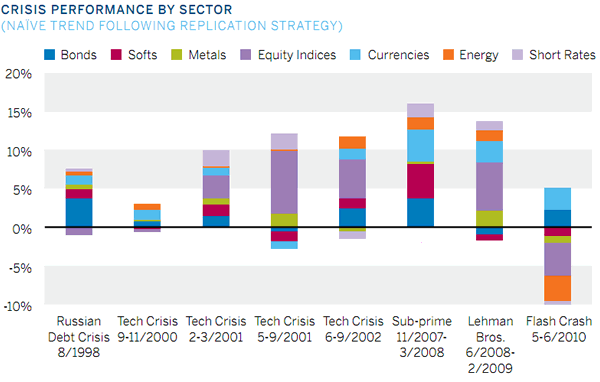In Crisis The RiskFree Rate and Equity Risk Premium – Things You Should Know Money & Markets
Post on: 30 Май, 2015 No Comment

By Roger Grabowski, Author of Cost of Capital: Applications and Exmples and Managing Director of Duff & Phelps
“One must test cost of capital estimates for reasonableness, and not simply apply data or formulas by rote.” – Roger Grabowski
Lingering fear and confusion since the 2008 Financial Crisis have exposed some weaknesses in the traditional models employed for estimating the cost of equity.
There are a number of models available to estimate the cost of equity capital (i.e. the expected rate of return required to attract funds to an equity investment). Any one of them might require some unique inputs, but the most frequently used models do have some overlap. For example, the Capital Asset Pricing Model and various “buildup” models require common inputs. We will limit this discussion to:
- The risk-free rate (Rf ) — the return available on a security generally regarded by the market as free of default risk. Usually the yield on sovereign bonds (e.g. U.S. Treasuries) is used as a proxy for the risk-free rate.
The data used to derive these inputs is typically drawn from periods of relative economic stability. You should know that in the (arguably) unprecedented present-day economic conditions, using these models without adjusting the underlying inputs may lead to nonsensical estimates of the cost of equity.
The aftermath of the 2008 Financial Crisis has been characterized by periods of significant economic upheaval. In this context, one specific cost of equity input has caused serious concern: the significant decline in yields on “risk-free” government-issued securities.
It is true that we saw a significant flight-to-quality by global investors over this period. Even so, the current yields may be considered artificially low – perhaps for reasons other than investor actions based on fundamentals. Why?
The policies adopted by the Fed (and central banks of other major countries) in the years following the 2008 Financial Crisis included massive purchases of mid-term and longer-term bonds, further depressing yields. One could even argue that these interventions were at times the main driver of lower yields, rather than just a contributing factor. In fact, this was the Fed’s intent to begin with.
In light of this, analysts may wish to consider “normalizing” risk-free rates to levels more in line with their historical context when valuing a company’s stock in the long-run. For example, one might use an average yield over some prior period.
The other side of this coin is a concept deeply entwined with the risk-free rate – the ERP. There is a great deal we could say about the ERP, but the most important takeaway may be this:
There is no single universally accepted way to estimate the ERP. All of the different methods have problems to a varying degree.
We suggest that you consider several methods when estimating the ERP. At Duff & Phelps we employ a two-step process for estimating a forward-looking long term ERP. Step 1 takes into account a broad range of economic information and multiple methodologies to identify a reasonable range within which the “true” ERP likely lies. Step 2 takes into consideration current economic conditions “on the ground” to identify where in this range the true ERP lies (at the top? middle? bottom?). The ERP is then combined with a normalized risk-free rate (if appropriate) to arrive at an estimate of the cost of equity capital.
As an alternative method, analysts could use the (lower) spot yield for the risk-free rate, and increase the ERP to account for higher risks. The adjustments are both, in principal, a response to the same underlying concerns, and should result in similar costs of equity capital. However, normalizing the risk-free rate is arguably a more direct (and easier to implement) approach versus adjusting the ERP due to a temporary reduction in yields on government securities.
The danger of not adjusting these important inputs is straightforward: it can lead to cost of capital estimates that don’t pass a “reasonableness” test.
The following example should illustrate our point. In December 2007 the “spot” yield on long-term (20-year) Treasuries was 4.5%, and the U.S. ERP developed using the historical return difference between stocks and bonds from 1926–2007 was 7.1%. Adding those two numbers together gave us a “base” cost of equity for the U.S. of 11.6%.
Then the 2008 Financial Crisis began – stocks declined precipitously, volatility increased significantly, and the house of Lehman fell. But, at the end of 2008 the “historical” ERP decreased to 6.5%, and the “spot” yield on long-term Treasuries was 3.0%, implying a “base” cost of equity capital for the U.S. of…9.5%. Really. Just as risks were undoubtedly increasing. the traditional inputs were telling us that risks were decreasing .
This mismatch of risk and implied base cost of equity has occurred repeatedly during the post-Crisis period. We witnessed another flight-to-quality in 2010, a reaction to the beginning of the Eurozone crisis. Afterwards, interest rates on T-bills and T-bonds were kept abnormally low due to the Fed’s second round of quantitative easing program (“QE2”). In 2011 we witnessed a third flight-to-quality which accompanied the deterioration of the Eurozone crisis. Again, every time the roller coaster of economic risk increased. the traditional inputs were telling us that risks were decreasing.
The post-2008 Financial Crisis turmoil requires a re-examination of the methods traditionally used to estimate the cost of equity capital. Specifically, in the case of the risk-free rate and ERP:
- Analysts should consider using “normalized’ rates during periods in which the yields on so-called “risk-free” government-issued securities may have declined for reasons other than investor actions based on fundamentals.
- Analysts should consider using multiple methods of estimating the ERP, since none of the methods is perfect as a stand-alone estimate. These can include “historical” methods, forward-looking methods based on estimates or implied by the market, and surveys.














